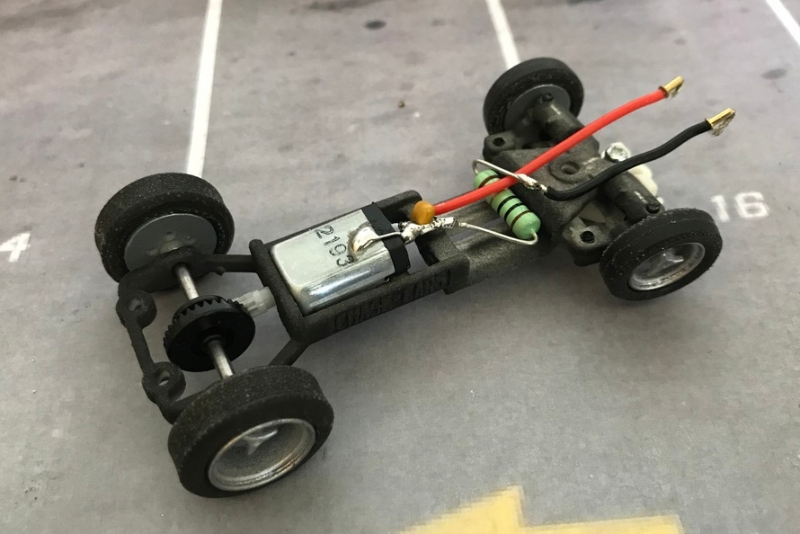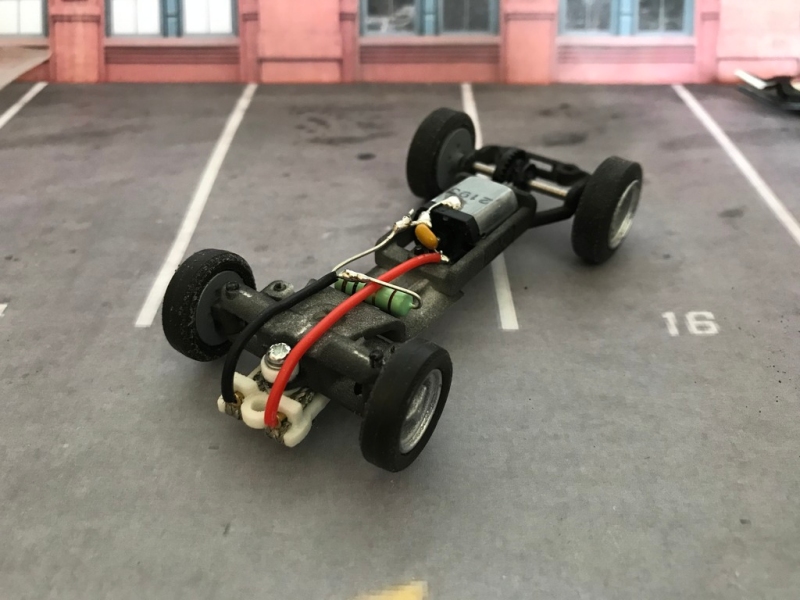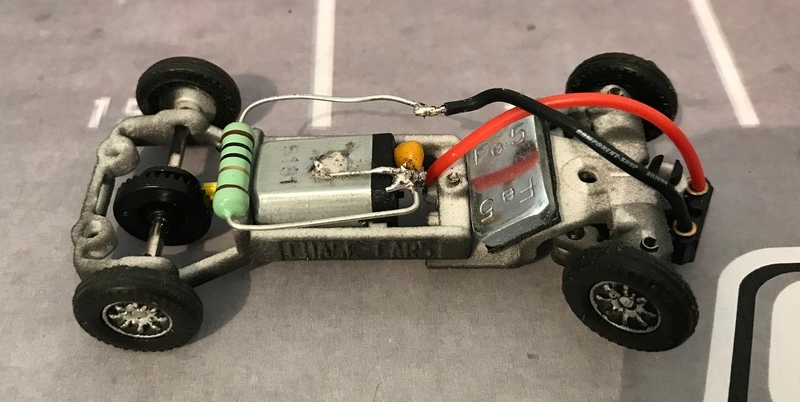Hey guys,
I have "converted" a few Artin/Cartronic 7.5 volt cars to 12 volts by swapping out the motor. I simply had a few standard 13D/Mabuchi motors lying around so I popped them in ( they had to go in "upside down") and rewired the motors,
I actually like the performance of this setup (with magnets) as there are some cool cars (Countach anyone?) that are not available in 1/32 and the kids love them-
The 7.5 volt motors were just too fast and and I the also made my ARC (ONE and AIR) go crazy which seems resolved with the Mabuchi and the ferritt man on them,...
Anyhoo... so I was wiring up some LEDs and mucking around with resistor values and then I thought... why can't I use resistors to get the volts down to 7.5 ?
The only thing holding me up as I do not know the "current" value in milliamps so I can't use the online calculators .I remember in the discussion last year about amps and motors we were talking about 13 amp... is that 13000 milliamps?!
The other problem is I am a complete fudgewit with math and electronics. :-D
I am a little worried about heat as there is not a lot of room in these cars...
I have a supplier for Mabuchi motors but the run about 3-5 € a piece and a resistors I can get as low as 2-3 cents. So I am curious (mind you I have to "create a ferritt man") if it would be easier/cheaper to solder in a resistor(plus the ferritt man)....
Addled minds want to know...
I have "converted" a few Artin/Cartronic 7.5 volt cars to 12 volts by swapping out the motor. I simply had a few standard 13D/Mabuchi motors lying around so I popped them in ( they had to go in "upside down") and rewired the motors,
I actually like the performance of this setup (with magnets) as there are some cool cars (Countach anyone?) that are not available in 1/32 and the kids love them-
The 7.5 volt motors were just too fast and and I the also made my ARC (ONE and AIR) go crazy which seems resolved with the Mabuchi and the ferritt man on them,...
Anyhoo... so I was wiring up some LEDs and mucking around with resistor values and then I thought... why can't I use resistors to get the volts down to 7.5 ?
The only thing holding me up as I do not know the "current" value in milliamps so I can't use the online calculators .I remember in the discussion last year about amps and motors we were talking about 13 amp... is that 13000 milliamps?!
The other problem is I am a complete fudgewit with math and electronics. :-D
I am a little worried about heat as there is not a lot of room in these cars...
I have a supplier for Mabuchi motors but the run about 3-5 € a piece and a resistors I can get as low as 2-3 cents. So I am curious (mind you I have to "create a ferritt man") if it would be easier/cheaper to solder in a resistor(plus the ferritt man)....
Addled minds want to know...











